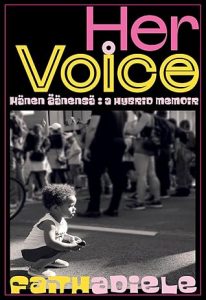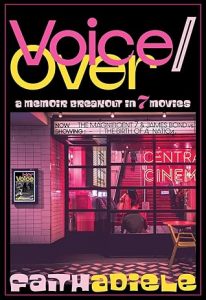TRANSFORMATION IS POSSIBLE: FROM UNSOLD MEMOIR TO A SERIES OF EXPERIMENTAL CHAPBOOKS
I n June, I turned up at a friend’s house with a box of books from my publisher and a bag of props. We didn’t have a plan for my “unboxing video”, but we had three hours and a color story—hot pink, yellow, and black to match the covers. Improvising, we rushed through the house, trailed by her puppy, cracking ourselves up. Finally, it was time to reveal the books. The moment I yanked open the box, I stopped acting.
n June, I turned up at a friend’s house with a box of books from my publisher and a bag of props. We didn’t have a plan for my “unboxing video”, but we had three hours and a color story—hot pink, yellow, and black to match the covers. Improvising, we rushed through the house, trailed by her puppy, cracking ourselves up. Finally, it was time to reveal the books. The moment I yanked open the box, I stopped acting.
“Oh, wow!” We gasped at the stacks of twin chapbooks (twins!), complementary covers glowing fuchsia and canary against velvety black. I palmed one in each hand and beamed at the camera. ”Leaf through the pages,” Susan directed, and I gasped again: the publisher had gone with colored illustrations. It wasn’t the 700-page epic family memoir I’d spent decades investigating and writing, but this felt monumental.
I always associated chapbooks with poetry. They were hand-stapled “starter” books with Xeroxed covers, sold at readings by poets working on full-length collections. But now, prose and hybrid chapbooks seem to be everywhere. And why not? Under 70 pages, they’re affordable, easily digitized, trans-genre and image friendly—perfect for experimenting with form, focus, and technology.
My first chapbook started with a dream. A few years ago, I awoke realizing I’d forgotten the sound of my grandmother’s voice. This led to other revelations—apparently, she had a thick Finnish accent; she thought her silence was killing her; her American doctor dismissed the cancer symptoms that did kill her. I assembled my inheritance (hand-tinted photos, baking equipment, her cancer diaries) to resurrect her. Hänen Äänensä / Her Voice: A Hybrid Memoir is that assemblage organized as a manual: how to make a home movie, how to bake a pie, how to say “I’m hurt” in Finnish, how to end women’s silences.
Embracing Speculative Nonfiction, the second chapbook was a leap of faith (literally). Voice/Over: An Essay Breakout In 7 Movies distills into a single Election Day my upbringing as the only Black girl in a Nordic immigrant family obsessed with American politics and cinema. While researching voting rights and the filmography of family favorites, I began to write our mythology in screenplay format. My editor suggested we innovate playwriting conventions à la MacArthur “Genius” and Pulitzer Laureate Suzan-Lori Parks. As the polls prepare to close, my family—cast as characters in iconic American movies—races to save democracy.
Ever since finding my father and siblings in Nigeria and my cousins in Finland decades ago, I’ve been working on the memoir from which these chapbooks come. Much of that work has been developing a structure. My international, multiracial clan demanded a hybrid form that spans nations, languages, cultures, races, generations, and genres. A few years ago, I was finally ready. But publishing is ever evolving. My agent sent out a new book proposal, we crossed our fingers, and … COVID blew up the world. No one was in the market for a 700-page, multi-genre, multimodal memoir.
Let’s be honest, my attention span shrank during the pandemic too. My “new normal” became shortform—essays, a weekly newspaper travel column, audio stories for the Calm app, short documentaries for HBO. After so much epic-ness, it was thrilling to see what diverse, shorter formats could do. My day job (teaching creative writing at an international art school with multilingual, visual, kinesthetic, and neuro-expansive learners) further refined my thinking. Each freelance project and new lesson plan was an opportunity to solve a narrative issue in which words were just part of the solution.
Could shortform and hybridity be the answer to the ongoing problem of an epic memoir? And wait, hadn’t I already been doing that? Was it possible that I was already a chapbook author? Back when I first started writing about my family, PBS tapped me for My Journey Home, a documentary about Americans whose families were transformed by global events. As writer, narrator, and subject, I insisted we interweave historic footage with family stories to illustrate the connections. The director called our 38-minute segment a 3-act essay. Or…a video chapbook?
Sometime after that, a fledgling, visionary press released an electronic and audio chapter of my story. The goal of SheBooks, founded by a two-woman writer and editor team from the San Francisco Bay Area, was to carve out a space in Silicon Valley Boy Culture for women’s voices. They planned to publish fiction and nonfiction e-stories by and for busy women that could be read on a screen in a single sitting. When they invited me to pitch, I immediately chose a long chapter that, while thematically linked to the memoir, operated in its own ecosystem. This time I interwove medical documents, Nigerian and Nordic lore, and my family quest, finally finding the tricultural Nigerian-Nordic-American voice I’d sought. The chapbook gave form to the structure. Reviewers referred to The Nigerian Nordic Girl’s Guide to Lady Problems as a “micro e-book” or “mini-memoir”, but surely it was a digital chapbook, just ahead of its time (as was SheBooks, which only lasted a couple years).
 If in my transmedia excursions, I’ve been writing chapbooks all along, could more chapters be transformed from supporting actors into stars? What was begging to be extracted from the memoir and innovated? I sent two selections to Texas Review Press. Their chapbooks have real binding, professionally designed covers, and the same press support and distribution as traditional books. To my delight, editor P.J. Carlisle wanted both. He saw them in conversation with each other and devised a tagline for a new publishing model: “2 Chapbooks/1 Multi-dimensional Memoir.”
If in my transmedia excursions, I’ve been writing chapbooks all along, could more chapters be transformed from supporting actors into stars? What was begging to be extracted from the memoir and innovated? I sent two selections to Texas Review Press. Their chapbooks have real binding, professionally designed covers, and the same press support and distribution as traditional books. To my delight, editor P.J. Carlisle wanted both. He saw them in conversation with each other and devised a tagline for a new publishing model: “2 Chapbooks/1 Multi-dimensional Memoir.”
“How great if each chapter were published in a different genre and style!” he raved. Our collaborations on the visual language for Her Voice and Voice/Over amazed me. I may have been drawn to shortform as preparation for longform, and it’s true that excerpting a longer, stalled project can invigorate it and open new markets. But chapbooks fit the current zeitgeist. Increasingly, writers from the margins—BIPOC, female-identified, non-binary, neuro-expansive, cross-genre—are finding home in tiny books with big ambitions. I’ve been offered another chapbook contract, this one to be illustrated by a former art school student-turned-cartoonist. It looks like I may sell my 700-page memoir after all, just 70 pages at a time!
Purchase here:
Her Voice: Hänen Äänensä: A Hybrid Memoir
https://www.tamupress.com/book/9781680033595/her-voice/
Voice/Over: An Memoir Breakout in 7 Movies
https://www.tamupress.com/book/9781680033618/voiceover/
—
Faith Adiele is author of Meeting Faith, an award-winning memoir about becoming Thailand’s first Black Buddhist nun, the e/audio chapbook The Nigerian-Nordic Girl’s Guide to Lady Problems, and two hybrid chapbooks about growing up Nigerian-Nordic-American in the Pacific Northwest. Her media credits include My Journey Home (PBS), Sleep Stories for the Calm app, and HBO-Max limited series, A World of Calm. Named as one of Marie Claire Magazine’s “Five Women to Learn From,” she speaks and teaches around the world.
Website: https://adiele.com/
Facebook: https://www.facebook.com/faith.adiele/
Instagram: https://www.instagram.com/meetingfaith/
LinkedIn: https://www.linkedin.com/in/faith-adiele-8072ab4/
Category: On Writing























